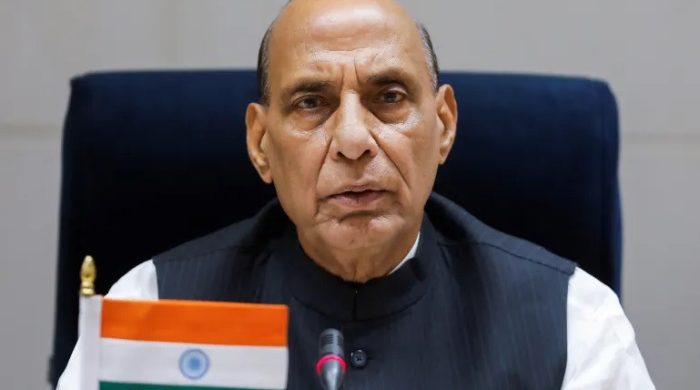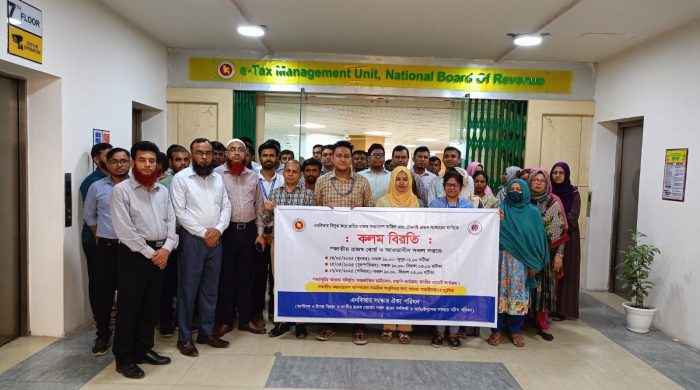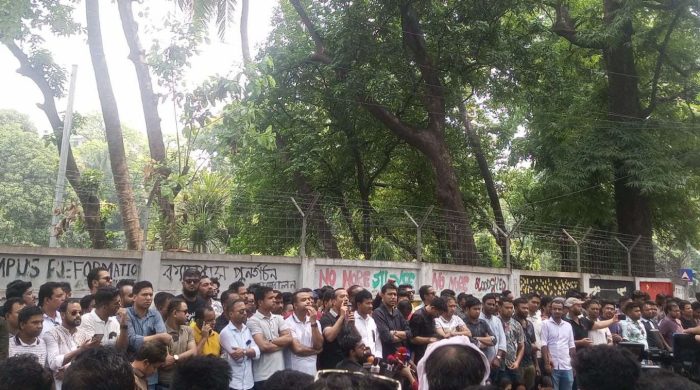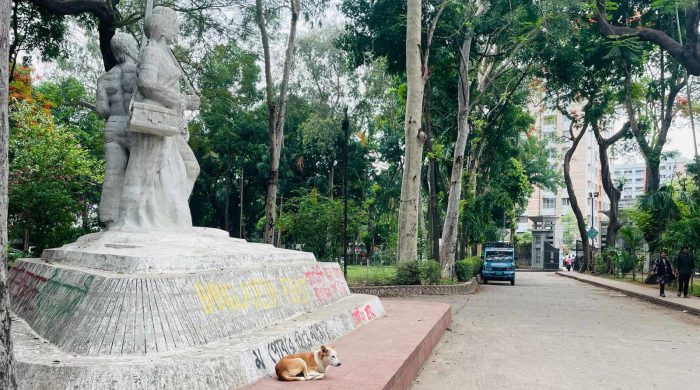Covid-19: The Philippines and its lockdown baby boom

- Update Time : Wednesday, December 23, 2020
- 175 Time View
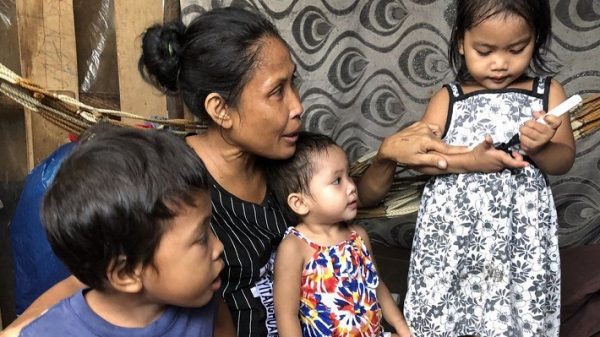
Rovelie Zabala is heavily pregnant with her 10th child.
As we talk, the 41-year-old leans at an awkward angle, leveraging all her back strength to hold her ninth child in her arms.
“Carl, Jewel, Joyce…” As Rovelie names her children, six-year-old Charlie shoots his mother a look of disapproval. “Sorry, his name is Charlie,” says Rovelie, innocently.
Rovelie had had seven children before she learnt about family planning, but this latest addition was a surprise conceived during one of the world’s strictest lockdowns, which saw soldiers patrolling the streets in armoured personnel carriers, police checkpoints restricting movement and only one family member allowed out to shop for food supplies.
The lockdown also meant hundreds of thousands of women have been unable to access birth control, resulting in tales of unplanned pregnancies like Rovelie’s being repeated across the country.
Indeed, it is estimated an extra 214,000 unplanned babies will be born in the next year, according to projections by the University of the Philippines Population Institute and the United Nations Population Fund. These children will be born into hospitals already overwhelmed by 1.7 million births a year, largely into families struggling to make ends meet.
And this is only the start.
Because the pandemic isn’t the only reason why the Philippines has a population crisis on its hands – a closer look reveals a problem years in the making.
A strong grip
The Philippine capital Manila is a city bursting at the seams, with 13 million people wedged between Manila Bay and the Sierra Madre mountain range. On average, more than 70,000 people are squeezed into every square kilometre, according to data from 2015.
The crush can be felt everywhere from the city’s traffic jams to the jails, where people sleep like sardines in cells that are 300% over capacity.
And it is the poor who live in the most overcrowded areas, where some are reduced to eating meat raided from rubbish dumps.
Experts argue that some of that poverty is directly attributable to the country’s high birth rate, as research has shown a fertility rate of close to two children per mother, so that the population is neither growing nor shrinking, boosts a country’s development by reducing the number of people born into poverty. In turn, a trimmed-down population receives a bigger slice of the national budget, improving sustainable resource use and life opportunities for all.
The Philippine government also knows this. Since the 1960s, it has worked to bring its fertility rate down with some success. So, while the population may have nearly tripled from 35 million to 110 million today, the rate has fallen from 6.4 in 1969 to 2.75 in 2020.
Yet they have been far less successful than fellow south-east Asian nation Thailand in the same period. The Buddhist country brought its fertility rate down from 5.8 children per mother in the late 1960s to 1.5 in 2020, according to UN data.
Its poverty rate now stands at 10%, compared to the Philippines’ 17%.
But why the difference? In part, the Philippines’ highly influential Catholic Church, which has led the charge in opposing contraception, encouraging procreation with the verse: “Be fruitful, and multiply.”
“Of course we are going to oppose it [contraception],” Father Jerome Secillano, of the Catholic Bishops’ Conference of the Philippines, tells me by video call.
“It is part of mandate not to allow these so-called reproductive pills… the so-called ‘moral suasion’ is just there to remind the people about the moral impacts, the negative impacts it will have on us. But then if the people will not adhere to our call, then so be it.”
Despite the Church’s misgivings, the Philippines had been getting a handle on things, with Ernesto Pernia, President Rodrigo Duterte’s former socio-economic minister, arguing that recent poverty reduction gains can be directly attributed to the government’s stronger implementation of the 2012 Reproductive Health Law (RHL), which made sex education and contraception more freely available to the poor.
Covid, however, could wipe those hard-won gains out.
“We will lose the entire four years that we have been working on the programme,” says Juan Antonio Perez, executive director of Commission on Population and Development (POPCOM). “We will have more unplanned pregnancies, right now it’s a rate of three out of every 10 are unplanned, it could be as high as probably half of the pregnancies next year unplanned, in the worst-case scenarios.”
The baby factory
Staff at Dr Jose Fabella Memorial Medical Hospital are used to being busy. Back in 2012 the hospital delivered up to 120 babies a day, leading to the ageing, US-colonial-era maternity ward being dubbed “The Baby Factory”.
Things had improved, with the number falling to roughly half that since RHL was approved in 2012. But now they are readying themselves for the “baby boom”.
As we enter ‘Ward One’, we’re hit by a cacophony of crying babies.
The room, the size of half a football pitch, has neat rows of single, metal-frame beds, pushed together in pairs. Fans whir away, barely making a dent on the hot and humid conditions. Mothers, adorned in delivery gowns, facemasks and face shields, sit cradling their newborns.
“Right now, you only have only around three or four patients in two beds put together,” Dr Diana Cajipe tells us. “Unfortunately we have no space, still so many more patients will come. It’s already way above the maximum capacity of the hospital. It can reach six to seven in two beds put together.”
The virus is not just causing a numbers problem though: last month the hospital had to temporarily close after seven of the residents and a nurse tested positive. At such close quarters, it is not hard to see how quickly the virus would travel.
The hospital management are hoping a new building will provide more bed space, but, as yet, it is still unfinished.
‘Heretics’
There is no doubt in Mr Pernia’s eyes that the long-term cost of the baby boom will be even more “intergenerational poverty”: the poor giving birth to children the system simply can’t handle.
But Covid-19 has also put a huge strain on an already stretched national budget, which will cause further problems.
“I was saying we need at least 2bn pesos ($41.5m) a year to really fully implement the population programme,” says Mr Pernia. “But the budget given to the population commission is about half a billion pesos ($10.4m) almost, about a quarter of what is needed.”
President Duterte is a keen advocate of family planning, Mr Pernia says, but is “more focused on the drugs and the corruption”, alluding in part to a bloody, violent crackdown on drug users and dealers.
The RHL has also had to face down lawsuits from charities allied to the Catholic Church, resulting in the morning after pill remaining illegal and family planning measures being denied to minors unless they have parental consent.
It is notable that the Philippines has the second highest teen pregnancy rate in South East Asia. The pandemic, POPCOM warns, could see that figure rise 20%.
The Catholic Church denies the claims levelled against it, urging the government to do more to address the country’s rich-poor divide.
“It’s always good for these heretics to blame the church for the failures of this so-called reproductive health system,” says Father Jerome Secillano. “With the situation we have right now, what will condoms do to the people who are mired in poverty? What will these pills do to the people who are hungry? It is a matter of prioritising what people really need right now.”
‘Number one worry’
Rovelie knows nothing but the poverty these men talk about. She lives in Baseco, Tondo, one of the world’s most densely populated areas.
But she also knows the Catholic Church, and its teachings on contraception and abortion.
“When I was just pregnant for only a month, I told my partner that I want to abort it because life is difficult,” she admits to us as we sit on the flood plain of a fetid river, one of the few areas you can find some peace in this bustling community.
“But he said that we can get through it. I continued rather than committing a sin.
“It’s been almost three months since we separated.”
Wiping away tears, Rovelie says she’s concerned about her children’s prospects. As we speak, people scatter as a police patrol car bumps along a muddy road, looking for a drug dealer. Selling drugs, Rovelie points out, is one of the only ways to “escape”. Now the Covid-19 pandemic has driven the Philippine economy into recession, opportunities here are bleaker than ever.
“That’s my number one worry, if I can still support their education?” says Rovelie.
“Sometimes when I get angry and lose my temper, I tell them what if I just put them up for adoption for rich people so that they’ll be able to have proper schooling. But then I tell myself that I can probably manage.”











